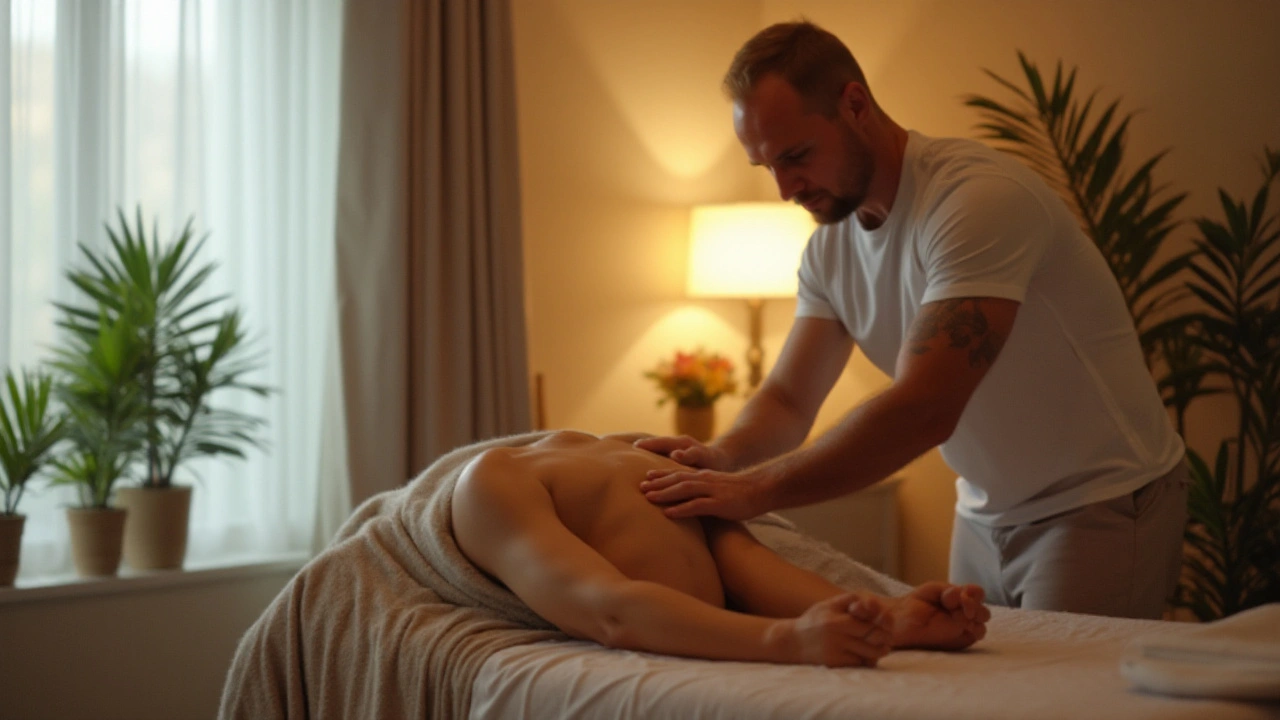Sports recovery: Practical massage and therapy tips
After a hard training session, your body needs smart recovery. If you work out often or play sports, knowing the best massage and therapy moves can speed healing, cut soreness, and get you back to top form faster. This page gathers clear, practical steps you can use today—no fluff.
First, match the method to the need. For acute pain or new injuries, see a clinician. For muscle tightness and delayed soreness, try targeted massage techniques like trigger point work, deep-tissue strokes, and compression. Trigger point massage can release tight spots that limit movement; pinch the knot, hold for 10 to 30 seconds, then move the joint through range of motion. Deep-tissue strokes—slow, firm pressure along the muscle fibers—help break down adhesions. Use these for 5 to 10 minutes per area, not longer.
Timing matters. After light sessions use gentle massage or self-myofascial release with a foam roller to boost blood flow. After intense or long workouts favor light recovery methods—soft tissue work, contrast baths, or gentle stretching. Avoid heavy deep-tissue work immediately after competition; inflammation is often still high and aggressive pressure can worsen it.
Tools and simple routines
Foam rollers, massage balls, and handheld percussion devices are handy. For foam rolling: start with 1 to 2 minutes per muscle group, move slowly, and stop if sharp pain appears. A lacrosse ball works great on the glutes and shoulders—sit on it and shift weight to find tight spots, hold for 20 seconds, breathe, then move slightly. Percussion tools are useful for quick warm-ups and easing tight calves or quads, but keep intensity low after events.
Combine massage with active recovery. Short walks, easy swims, or light cycles increase circulation and clear waste products from muscles. Try a 20 to 30-minute low-intensity session the day after a hard workout. Add mobility drills that focus on stubborn areas—ankles for runners, thoracic spine for throwers—to maintain range without stressing tissues.
Recovery plans that actually work
Create a weekly plan: one deep session (therapist or longer self-massage) after your heaviest training day, daily 5–10 minute maintenance work on tight spots, and active recovery the day after big efforts. Track soreness and mobility in a simple notebook. If tenderness stays beyond a week, or strength drops, consult a physical therapist.
Nutrition and sleep matter. Protein within two hours of training and steady hydration support tissue repair. Aim for consistent 7 to 9 hours of sleep—that’s when hormones for muscle repair peak. Small changes here often speed recovery more than extra massage sessions.
If pain worsens, shows swelling, numbness, or loss of function, see a healthcare pro right away. Use a simple app or notebook to log sessions, pain levels, and range of motion to spot trends and prevent setbacks.
Use these tips to build a sports recovery routine that fits your sport and schedule. Try one new tool or habit each week, note effects, and keep what helps. Faster recovery is about smart choices, not always more work.

Boost Athletic Performance with Swedish Massage Techniques
Discover how Swedish massage can significantly enhance your athletic performance. Explore the benefits of improved muscle recovery, increased flexibility, stress reduction, and enhanced circulation. Learn practical tips and methods for incorporating Swedish massage into your fitness routine.
Categories
- Health and Wellness (148)
- Alternative Therapies (86)
- Massage Therapy (40)
- Travel and Culture (15)
- Beauty and Skincare (9)
- Holistic Health (8)
- Health and Fitness (5)
- Spirituality (5)
- Other (2)
- Personal Development (2)
Popular Articles



